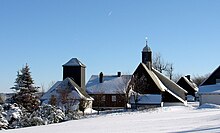
The Mettenschicht is an old German mining custom in the Ore Mountains. It is the name given to the last shift worked before Christmas, [1] which ends early with a celebration and meal.

The Mettenschicht is an old German mining custom in the Ore Mountains. It is the name given to the last shift worked before Christmas, [1] which ends early with a celebration and meal.
Mettenschicht is the main Christmas celebration among miners in the Protestant Ore Mountains; in Catholic mining areas of Germany, St Barbara's Day is more important. [2] It is first recorded in the first half of the 17th century. [3] The Steiger, a foreman or overseer, would finish the pre-Christmas shift early with a knocking signal, "knocking the miners out". Then he would give a sort of sermon in the Huthaus, the administrative building, which was decorated for the occasion. Singing miners' songs such as Der Steiger, the miners would give thanks to God for the products of the mine. A simple, traditional meal ended the shift. The meal usually consisted of bratwurst with mashed potatoes and sauerkraut as well as herbed schnapps and a cigar (gaahlem Gelecht). Also common are glühwein, tea and bacon-fat butterbrot .
The idea of the Mettenschicht has spread from the Ore Mountains to many exhibition mines as an idea for a Christmas celebration with elements of mining tradition. They vary from end-of-year celebrations focusing on strict historical authenticity, often held in the mine itself, attended by sponsors, friends, and in many cases honorary officials of the mine, through incentive events for which tickets are sold, to mining folk events put on in the city hall for bus tours.
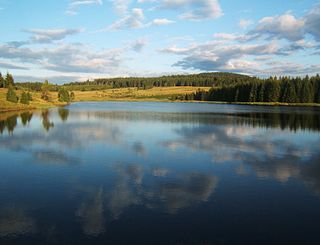
The Ore Mountains lie along the Czech–German border, separating the historical regions of Bohemia in the Czech Republic and Saxony in Germany. The highest peaks are the Klínovec in the Czech Republic, which rises to 1,244 metres (4,081 ft) above sea level and the Fichtelberg in Germany.
The Zollernalbkreis is a Landkreis (district) in the middle of Baden-Württemberg, Germany. The district is located in the Swabian Alb, and contains the second highest elevation of this range, the 1,011-metre (3,317 ft) high Oberhohenberg. In the south-east the district nearly reaches to the river Danube.

A hammer mill, hammer forge or hammer works was a workshop in the pre-industrial era that was typically used to manufacture semi-finished, wrought iron products or, sometimes, finished agricultural or mining tools, or military weapons. The feature that gave its name to these workshops was the water-driven trip hammer, or set of hammers, used in the process. The shaft, or 'helve', of the hammer was pivoted in the middle and the hammer head was lifted by the action of cams set on a rotating camshaft that periodically depressed the end of the shaft. As it rose and fell, the head of the hammer described an arc. The face of the hammer was made of iron for durability.

Marienberg is a town in Germany. It was the district capital of the Mittlerer Erzgebirgskreis in the southern part of Saxony, and since August 2008 it has been part of the new district of Erzgebirgskreis. As of 2020, the town had 16,716 inhabitants.

The 140-kilometre-long road, the Silver Road is the first and longest holiday route in the German Free State of Saxony. Against the background of the importance of mining in the history of Saxony, the road links those sights and tourist attractions of the Ore Mountains and its foreland that relate to the centuries-old mining and smelting industries of the region.

A schwibbogen is a decorative candle-holder from the Ore Mountains (Erzgebirge) region of Saxony, Germany. The first metal schwibbogen was made in 1740 in Johanngeorgenstadt. The early candle arches consisted of a single forged piece of black metal which could be painted. The number of candles varies with the size of the arc, the original design holding eleven. In the UK candle arches or candle bridges are marketed, often just consisting of a simple wooden stepped arch with 7 electric candles. These are not strictly schwibbögen.
Frohnau is a village in the Saxon town of Annaberg-Buchholz in the district of Erzgebirgskreis in southeast Germany. The discovery of silver on the Schreckenberg led in 1496 to the foundation of the neighbouring mining town of Annaberg. The village of Frohnau is best known for its museum of technology, the Frohnauer Hammer, and the visitor mine of Markus Röhling Stolln. The mining area around Frohnau has been selected as a candidate for a UNESCO World Heritage Site: the Ore Mountain Mining Region.
Berggeschrey or Berggeschrei was a German term for the rapid spread of news on the discovery of rich ore deposits that led to the rapid establishment of a mining region, as in the silver rush in the early days of silver ore mining in the Ore Mountains. It is similar in some respects to the gold rush in North America.
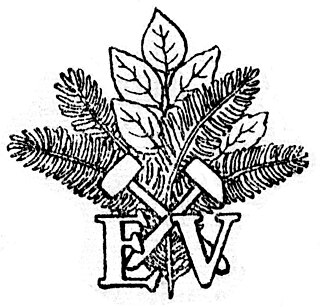
The Ore Mountain Club is one of the oldest and most tradition-steeped local history, mountain and hiking clubs in Germany. The club was founded in 1878. After the Second World War the club and its many branches were banned by the East German authorities, but it was refounded in West Germany in Frankfurt am Main in 1955. Only after the political events of Die Wende in 1990 was it newly founded in the Ore Mountains. At the end of 2008 the club had over 3,859 members in 61 branches. Before 1945 there were more than 25,000 members. In 1929 the Ore Mountain Club even had over 28,000 members in 156 branches and managed several accommodation houses on the Fichtelberg near Oberwiesenthal and the Schwartenberg between Seiffen and Neuhausen/Erzgeb.
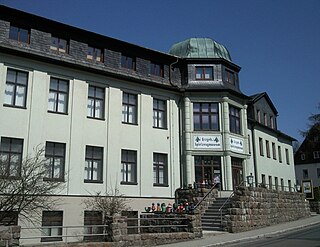
Ore Mountain folk art is a well-known form of highly artistic wood carving from East Germany. It encompasses the diverse forms of expression of the creative work beyond the classical or the modern arts, and in particular the production of figures, sculptures and paintings. In a broader sense, the people's poetry, literature, and the Ore Mountain songs are in itself the folk art. The Ore Mountains claim to be the largest, enclosed folk art area in Germany.
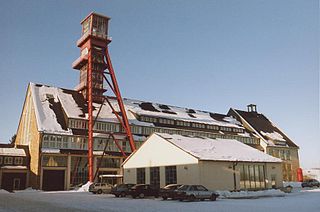
The Ore Mountain Mining Region is an industrial heritage landscape, over 800 years old, in the border region of the Ore Mountains between the German state of Saxony and North Bohemia in the Czech Republic. It is characterised by a plethora of historic, largely original, monuments to technology, as well as numerous individual monuments and collections related to the historic mining industry of the region. On 6 July 2019, the Erzgebirge/Krušnohoří Mining Region was inscribed as a UNESCO World Heritage Site, because of its exceptional testimony to the advancement of mining technology over the past 800 years.

The Miners' Parade is a parade traditionally held in places in Germany where ore was and is smelted. It was and is a public event held by a community or corporation whose employment is linked to mining and smelting. It is usually known in German as a Bergparade, but also as a Berg- und Hüttenparade. It takes place as one of the highlights of a festival. The Miner's Parade is a special form of procession which is organised to march past important dignitaries or which is organized for such high-ranking individuals.
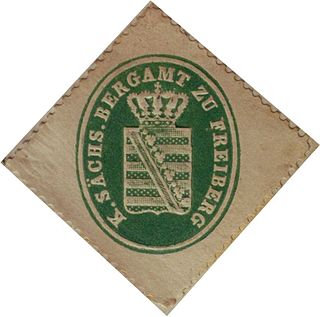
The Saxon Mining Office is the executive authority for mining rights in the German state of Saxony. It is also responsible for all non-metallic mineral resources on the terrain of the former East Germany.

Glückauf is the traditional German miners' greeting. It describes the hope of the miners: "es mögen sich Erzgänge auftun" which is short for "Ich wünsche Dir Glück, tu einen neuen Gang auf", because, when mining for ore, without prospecting, no-one could predict with certainty whether the miners' work would lead to a reward. The greeting also expressed the desire that miners would return safely from the mine after their shift.

The Neugrabenflöße, was a roughly 18 km long Kunstgraben dating to the 17th century. It enabled the rafting of timber for the mining and smelting industries in the Ore Mountains of eastern Germany. It ran from the River Flöha near Fleyh (Fláje) to the Freiberger Mulde near Clausnitz in the Ore Mountains.

A miner's habit is the traditional dress of miners in Europe. The actual form varies depending on the region, the actual mining function, and whether it is used for work or for ceremonial occasions.

A Weihnachtsberg is a decorative, mountain-like model of the landscape of the Ore Mountains, which is set up indoors during the Christmas period. It portrays the nativity scene and mining motifs as well as local themes. The figures and objects are often movable and mechanically driven.

Satzung is a village in the Saxon municipality of Marienberg, which is in the district of Erzgebirgskreis in the German Ore Mountains.

A hewer is a miner who loosens rock and minerals in a mine. In medieval mining in Europe a Hauer was the name given to a miner who had passed his test (Hauerprüfung) as a hewer.
Mauersberg is a district of the Großrückerswalde municipality in the Erzgebirgskreis district of Saxony, Germany.